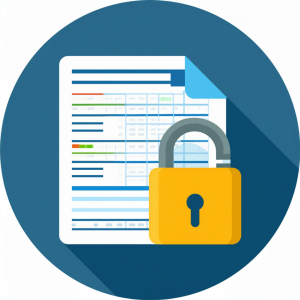
Role of IT Admins in Managing Office Updates and Lifecycle on Enterprise Devices
Ensuring Productivity, Security, and Compliance
Introduction
In today’s fast-paced business environment, Microsoft Office has become an indispensable tool for productivity and collaboration. However, managing the lifecycle of Office applications across an enterprise can be a daunting task, fraught with challenges such as maintaining security, ensuring compliance, and minimizing disruptions to end-user workflows. This is where the role of IT administrators becomes crucial.
Ensuring Productivity with Timely Updates
One of the primary responsibilities of IT administrators is to ensure that end-users have access to the latest Office features and functionality. Keeping Office applications up-to-date not only enhances productivity but also addresses potential security vulnerabilities and compatibility issues with other systems and file formats.
IT admins must carefully plan and implement Office update strategies, taking into account factors such as network bandwidth, device compatibility, and end-user training needs. This may involve leveraging tools like Windows Server Update Services (WSUS) or cloud-based deployment solutions to streamline the update process and minimize disruptions to business operations.
Maintaining Security and Compliance
In addition to ensuring productivity, IT administrators play a critical role in maintaining the security and compliance of Office deployments across the enterprise. As Office applications become increasingly integrated with cloud services and handle sensitive data, the risk of cyber threats and data breaches increases.
IT admins must stay vigilant and implement robust security measures, such as enforcing strong password policies, enabling multi-factor authentication, and deploying Office security updates and patches in a timely manner. They must also ensure that Office deployments remain compliant with industry regulations and standards, such as GDPR, HIPAA, or PCI-DSS, to avoid potential legal and financial consequences.
“Maintaining the security and compliance of our Office deployments is a top priority. We have implemented stringent security protocols and leverage advanced tools to ensure that our end-users can work productively while minimizing the risk of data breaches or regulatory violations,” shared a seasoned IT administrator from a leading financial institution.
Managing Office Lifecycle and Uninstallations
As new versions of Office are released, IT administrators must carefully plan and manage the lifecycle of existing deployments. This may involve evaluating the need for upgrades, assessing compatibility with existing systems and applications, and determining the most efficient deployment strategies.
When it comes to uninstalling Office applications, IT admins must leverage reliable tools like OffScrub VBS scripts and follow best practices to ensure a smooth and complete removal process. Failure to properly uninstall Office can lead to lingering files, registry entries, and potential conflicts with future installations or updates.
Additionally, IT admins must implement robust recovery plans and procedures to address any issues that may arise during the uninstallation process, minimizing downtime and ensuring business continuity.
Conclusion
The role of IT administrators in managing Office updates and lifecycle on enterprise devices is multifaceted and critical to ensuring productivity, security, and compliance within an organization. From implementing timely updates and maintaining robust security measures to managing Office deployments and uninstallations, IT admins must stay vigilant and leverage the latest tools and best practices.
By mastering the art of Office lifecycle management, IT administrators can not only enhance end-user productivity but also safeguard sensitive data, maintain regulatory compliance, and ensure the overall stability and efficiency of an organization’s IT infrastructure.
For comprehensive guidance and resources on managing Office updates, deployments, and uninstallations, explore our extensive collection of articles and tutorials on The IT Apprentice.
This blog post explores the critical role of IT administrators in managing Microsoft Office updates and lifecycle on enterprise devices. It covers topics such as ensuring productivity with timely updates, maintaining security and compliance, managing Office lifecycle and uninstallations, and leveraging tools like OffScrub VBS scripts for efficient Office management.
Keywords targeted for SEO optimization include “IT admins Office lifecycle management”, “Office update management”, “Office security and compliance”, “Office uninstallation best practices”, “OffScrub VBS scripts for Office”, “enterprise Office deployment strategies”, and “Office lifecycle planning”.
Related Posts:
- A Step-by-Step Guide to Manually Uninstalling Office When All Else Fails
- Impact of Office Uninstallation on Network and User Productivity
- Mastering Office Deployment with OffScrub
Join Our Community!
🌟 Get exclusive insights and the latest IT tools and scripts, straight to your inbox.
🔒 We respect your privacy. Unsubscribe at any time.


